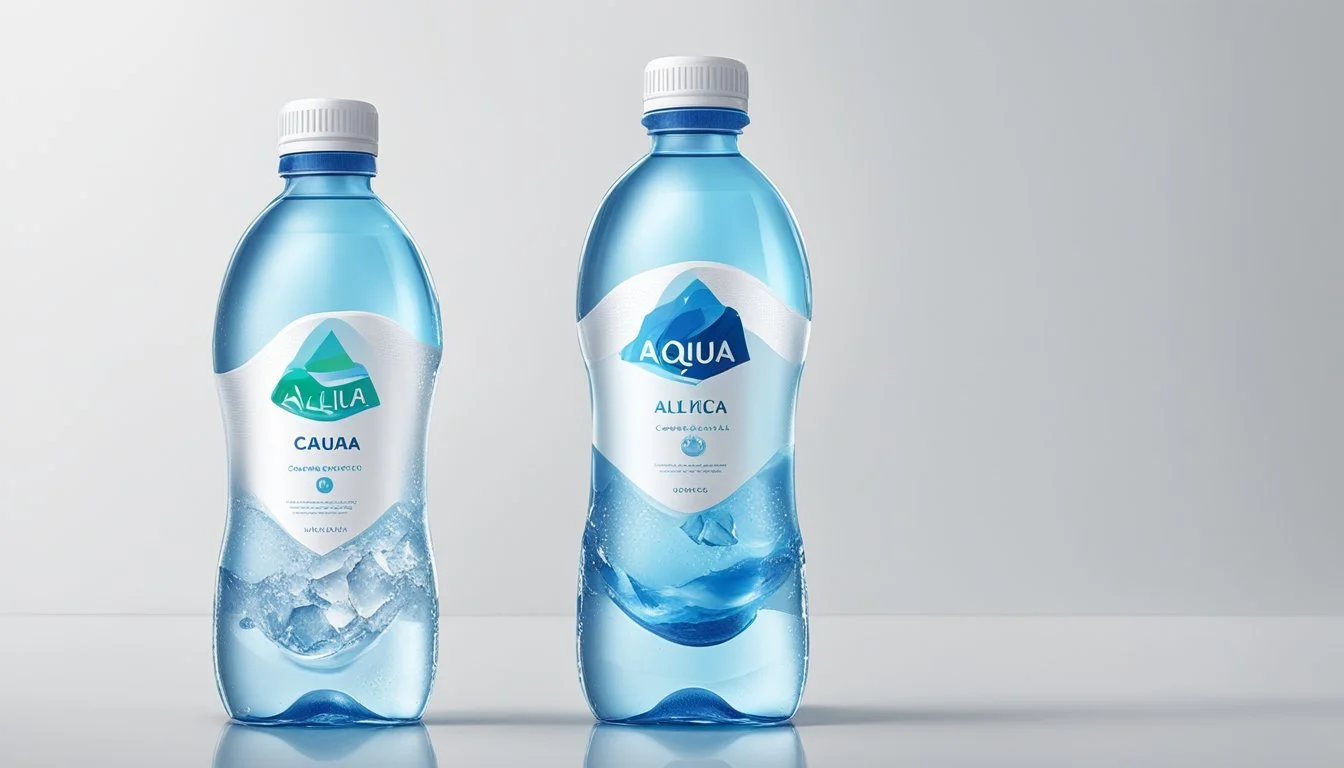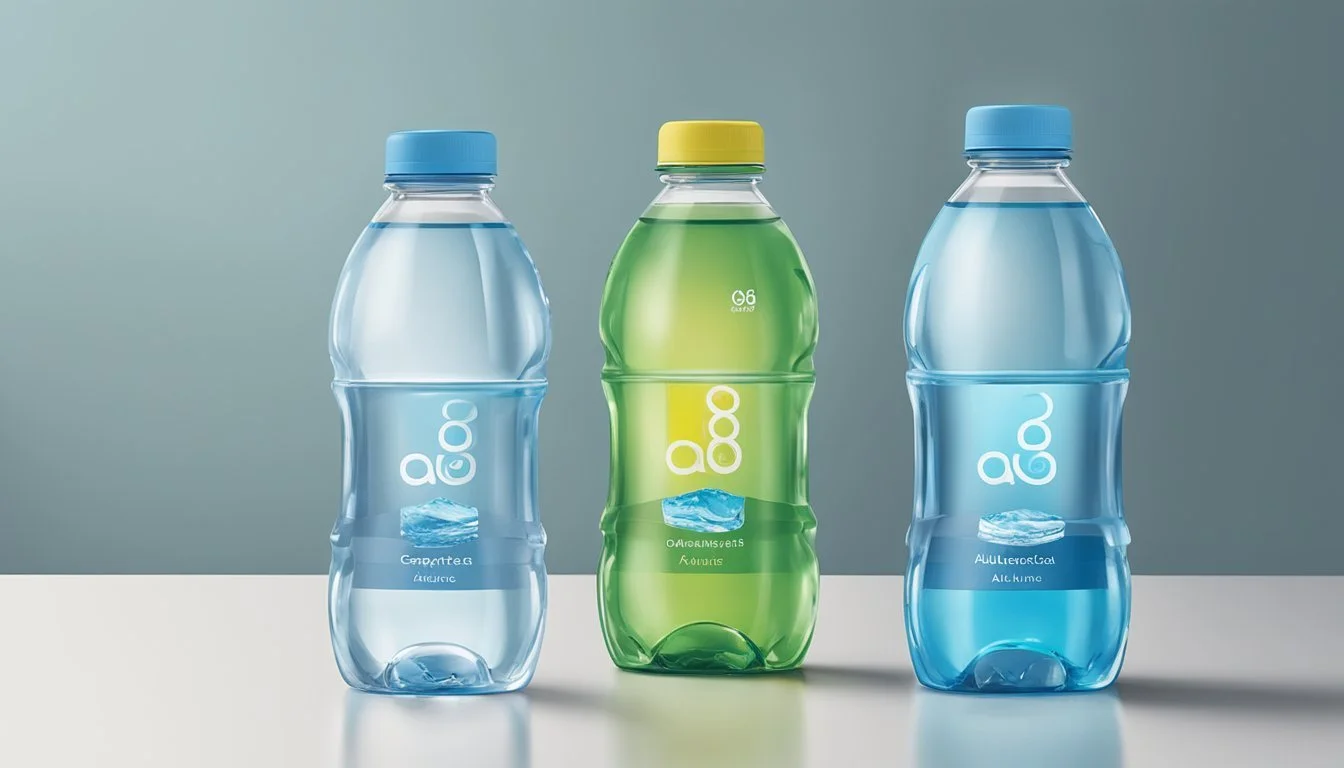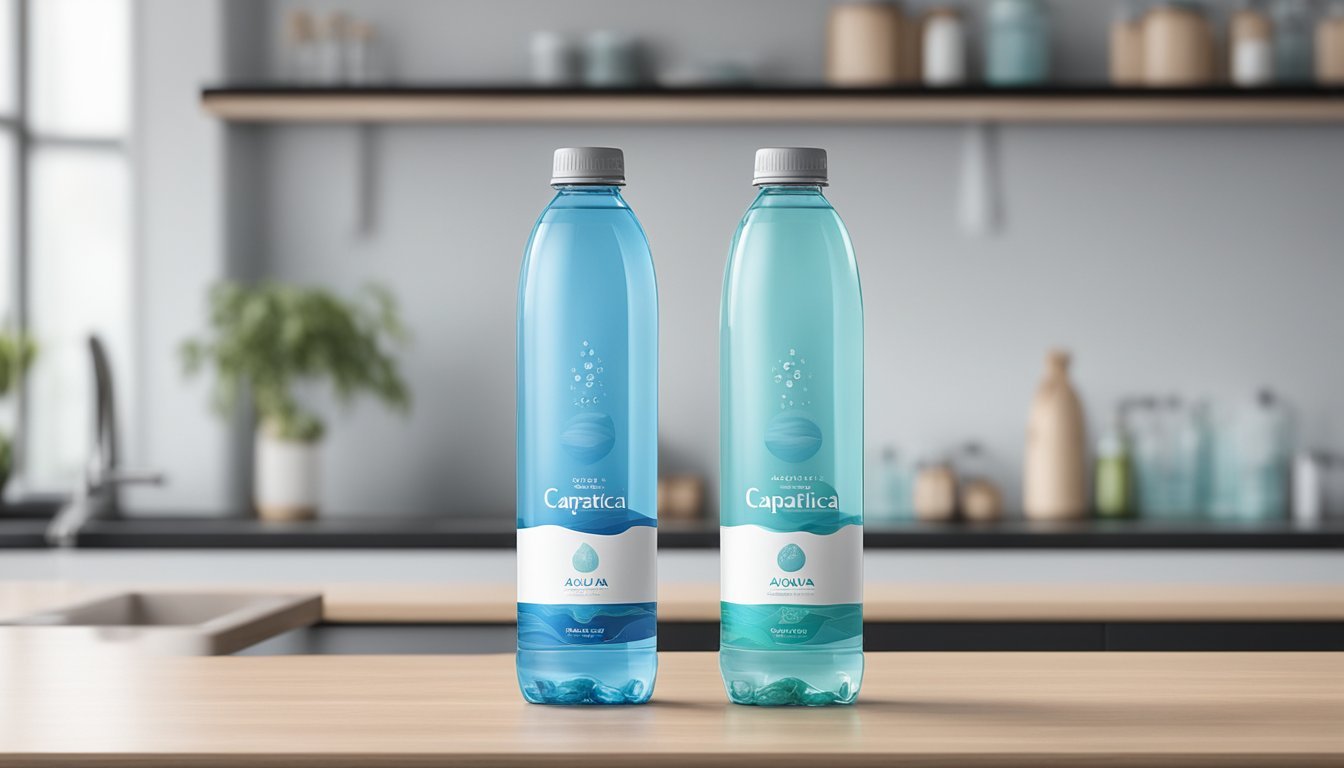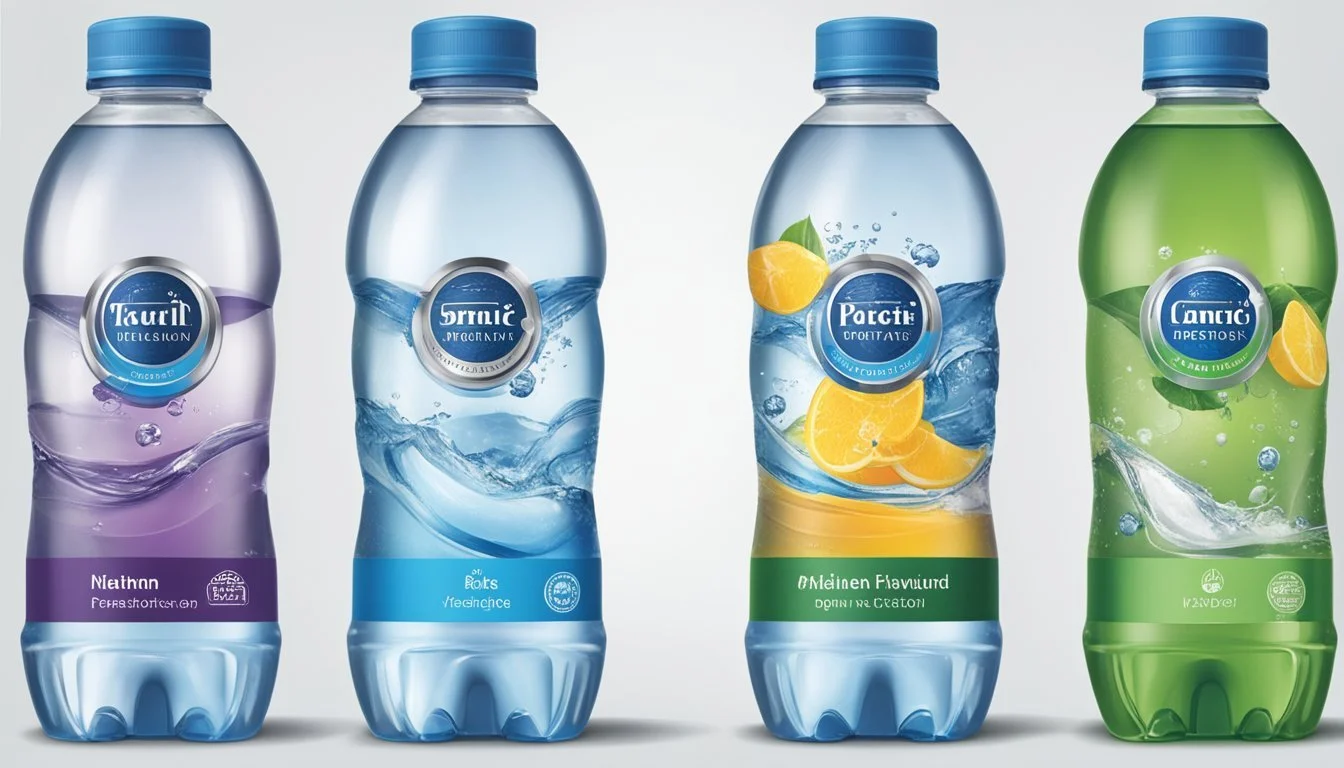Aqua Carpatica vs. Alkaline88
Comparing Bottled Water Brands
When it comes to choosing between Aqua Carpatica and Alkaline88, health-conscious consumers often find themselves at a crossroads. These two bottled water brands, each boasting unique qualities, aim to provide not just hydration but additional health benefits. Aqua Carpatica is celebrated for its nitrate-free composition and fresh taste, making it a suitable option for those wary of contaminants.
In contrast, Alkaline88 stands out with its higher pH level and 84 added minerals, promising better hydration and body balance. Many consumers also appreciate the aesthetically pleasing design of Alkaline88 bottles, which may appeal to those looking for a blend of function and form. Reviewing these aspects helps potential buyers decide on which water aligns with their health goals and lifestyle preferences.
By understanding the distinct benefits of each brand, individuals can make a more informed choice. Whether prioritizing mineral content and taste or purity and packaging, both Aqua Carpatica and Alkaline88 have their strengths. This analysis aims to provide clarity and guide you toward selecting the best bottled water for your needs.
Comparative Overview of Aqua Carpatica and Alkaline88
Aqua Carpatica and Alkaline88, key players in the bottled water market, differ significantly in their origins, filtration methods, and nutritional profiles. This section outlines their distinctive characteristics, focusing on their respective roots, purification processes, and the mineral and electrolyte content each brand offers.
Brand Origins and Presence
Aqua Carpatica:
Originates from Romania.
Sources its water from the Carpathian Mountains, known for its pristine environment.
Markets itself as a premium brand with a focus on natural mineral content.
Alkaline88:
Originates from the USA.
Aims to provide high-pH water for enhanced hydration.
Widely available across the United States, positioned as a health-focused brand with added electrolytes.
Source and Filtration Methods
Aqua Carpatica:
Sourced from natural springs in the Carpathian Mountains.
Utilizes minimal filtration, preserving the natural mineral composition of the water.
Focuses on delivering untouched, natural spring water with no significant alteration.
Alkaline88:
Sourced from tap water in the USA.
Utilizes reverse osmosis and ionization to achieve its high pH level.
Adds minerals and electrolytes during the filtration process to enhance hydration and taste.
Nutritional Profiles: Minerals and Electrolytes
Aqua Carpatica:
Emphasizes its content of naturally occurring minerals such as calcium, magnesium, and bicarbonate.
Free from nitrates, positioning itself as a safer option for health-conscious consumers.
Offers both still and naturally sparkling water variants.
Alkaline88:
Known for its high pH level, typically around 8.8, promoting alkalinity.
Infused with electrolytes like potassium and magnesium to support hydration.
Marketed as purified water with added health benefits, especially for active lifestyles.
By examining the origins, filtration methods, and nutritional profiles, consumers can better understand the unique offerings of Aqua Carpatica and Alkaline88. This helps in making an informed choice depending on personal health preferences and lifestyle needs.
Health and Hydration
Both Aqua Carpatica and Alkaline88 boast distinct properties claimed to enhance health and hydration. Knowing the differences in pH levels and specific health implications can guide an informed choice.
pH Levels and Health Implications
Aqua Carpatica Natural Still Mineral Water has a neutral pH level around 7.4, which closely aligns with the body's natural pH balance. This can assist in maintaining homeostasis without significantly altering blood pH. The water's purity, sourced from the Carpathian Springs of Romania, contributes to its health claims, promising minimal contaminants.
Alkaline88, on the other hand, features a high pH level, typically around 8.8. This higher alkalinity is suggested to counterbalance acidic diets, potentially reducing acid reflux and improving overall pH balance. Nevertheless, consuming excessively high pH water might disrupt the natural acid-base balance, especially if consumed in large amounts.
Benefits of Staying Hydrated
Staying hydrated is crucial for bodily functions, and both Aqua Carpatica and Alkaline88 emphasize this core benefit. Aqua Carpatica's natural mineral content helps replenish essential electrolytes, enhancing energy levels and supporting metabolic processes.
Alkaline88's formulation includes added electrolytes, which aim to boost hydration, especially valuable during physical activities. Drinking Alkaline88 may also offer additional benefits, such as reducing muscle fatigue and improving recovery times.
In both cases, consistent hydration aids in overall wellness, skin health, and even cognitive functions, making it essential regardless of the chosen brand.
Product Variants
When comparing Aqua Carpatica and Alkaline88, it's essential to comprehend the available product variants. These include options like still and sparkling water, as well as differences in bottles and packaging.
Still vs. Sparkling: Understanding the Options
Aqua Carpatica offers both still and sparkling variants. Still water from Aqua Carpatica is known for its purity and low mineral content, making it suitable for those who prefer a neutral taste. The sparkling water is naturally carbonated, offering a crisp, refreshing experience.
Alkaline88, on the other hand, primarily provides still water. It is marketed for its high pH level and added electrolytes. The lack of sparkling options might be a consideration for those who enjoy the effervescence of carbonated water.
Bottles and Packaging
Aqua Carpatica focuses on sustainability with options available in both glass bottles and BPA-free plastic bottles. The glass bottles are fully recyclable and emphasize the brand’s commitment to environmental responsibility.
Alkaline88 opts for recyclable plastic bottles. While their plastic is BPA-free and often 100% recyclable, the absence of glass options might not appeal to eco-conscious consumers looking for more sustainable packaging.
Understanding these product variants helps in making an informed choice based on personal preferences for water type and packaging.
Taste Profile and Consumer Preferences
AQUA Carpatica and Alkaline88 stand out in the crowded bottled water market, offering distinct taste profiles and earning various consumer awards.
Taste Comparison and Personal Experience
AQUA Carpatica is known for its crisp, clean taste, derived from its natural nitrate-free composition. Its low sodium content and balanced mineral profile contribute to a refreshing and light drinking experience. Fine water enthusiasts often appreciate its purity and lack of aftertaste, making it a favored choice among discerning consumers.
Alkaline88, on the other hand, features a higher pH level, often around 8.8, providing a smooth and slightly more viscous mouthfeel. The alkalinity lends a subtly different taste compared to other bottled waters, appealing to those seeking an alkaline diet. Many users report a smooth, almost silky texture that makes it a pleasure to drink, particularly during or after exercise.
Consumer Awards and Recognition
AQUA Carpatica has garnered attention for its purity and taste, earning accolades from various water quality organizations. It is frequently highlighted for its natural nitrate-free composition and low sodium levels, which resonate with health-conscious consumers. Awards from fine water competitions further attest to its superior taste and quality.
Alkaline88 has also received positive feedback, particularly from the wellness and fitness communities. Its unique alkaline properties and smooth texture have earned it recognition as a premium choice for those focusing on health and hydration. The brand's commitment to purity and quality is often acknowledged in consumer reviews and ratings, solidifying its reputation in the market.
Environmental Impact
Different bottled water brands vary in their approach to sustainability and their influence on the environment. These can include their sustainability practices and the environmental footprint of their bottling processes.
Sustainability Practices
Aqua Carpatica emphasizes eco-friendly practices by sourcing their water from natural springs in an environmentally responsible manner. They aim to preserve the surrounding forests and maintain the purity of their source.
Alkaline88, meanwhile, puts a strong focus on sustainability by prioritizing recyclable packaging and supporting initiatives for safe drinking water.
Both brands are committed to reducing their carbon footprint:
Aqua Carpatica uses lightweight materials to decrease transportation emissions.
Alkaline88 participates in projects aimed at capturing and offsetting their carbon output.
Choosing between the two often comes down to which sustainability practices align more closely with consumer values.
Impact of Bottling on the Environment
The bottling process has a significant environmental impact, which varies between Aqua Carpatica and Alkaline88.
Aqua Carpatica uses glass bottles and lightweight plastic alternatives to minimize plastic waste and pollution. Their bottling facilities are designed to be energy-efficient.
Alkaline88 opts for BPA-free plastic bottles and promotes the use of eco-friendly materials. They also invest in technologies to reduce carbon emissions during production and distribution.
Both brands understand that the environmental footprint extends beyond just the packaging, encompassing the entire lifecycle of the product from production to disposal.
Their efforts are aimed at reducing the harmful effects of their products on the planet, but each uses different strategies to achieve this goal.
Availability and Accessibility
Aqua Carpatica and Alkaline88 have distinct approaches to distribution, impacting their accessibility for consumers. Both brands can be found in various retail and online platforms, making it convenient to purchase based on preferences.
Retail Presence in Grocery and Convenience Stores
Aqua Carpatica is available in many grocery stores and high-end supermarkets. It is often found in health food stores, thanks to its position as a premium, naturally nitrate-free water. Stores like Whole Foods and specialty retailers commonly stock this brand, increasing its retail presence.
Alkaline88, on the other hand, targets a broader audience. It appears on the shelves of major grocery chains such as Walmart and Kroger. Its appeal largely stems from its high pH level, marketed towards the health-conscious consumer.
Essentia and Smartwater are also notable players, with extensive distribution networks. Essentia offers high-pH water, while Smartwater focuses on vapor-distilled water, prominent in convenience stores and gas stations. Aquafina, part of PepsiCo, dominates with its wide availability.
Online Availability and Buying Options
Aqua Carpatica offers direct purchases through www.aquacarpatica.com, making online shopping straightforward. It is also sold on platforms like Amazon, providing various purchase options, including bulk orders. This ease of access caters to consumers who prefer home delivery.
Alkaline88 utilizes a similar strategy, being readily available on major e-commerce sites like Amazon and Walmart's online store. Consumers can choose from a range of packaging sizes, from single bottles to multi-packs. This online presence makes it accessible for those prioritizing convenience.
Both brands emphasize online marketplaces to reach tech-savvy shoppers. This digital footprint allows them to compete with other established water brands like Essentia and Smartwater, ensuring they stay relevant in a crowded market.
Economic Considerations
When evaluating Aqua Carpatica and Alkaline88, it's crucial to consider the factors of cost and value for money. This involves looking at the serving size, the source of the water, and how these elements influence the price and perceived value.
Cost Comparison
Aqua Carpatica is sourced from springs in the Carpathian Mountains, which may contribute to its pricing. On average, it costs around $1-1.5 per liter. It's marketed as nitrate-free and low in sodium, possibly justifying its higher price.
Alkaline88, produced through an ionization process, costs approximately $1-1.4 per liter. Sold in various sizes, the economies of scale might make it slightly cheaper per serving. Its pH balance and added electrolytes could be factors justifying its pricing.
Value for Money
Aqua Carpatica offers unique qualities like natural nitrate-free water and a low sodium level. For consumers valuing these health benefits, the higher cost per liter may seem justified.
Alkaline88 provides benefits linked to its alkaline pH and added electrolytes. For individuals seeking these specific health benefits, the cost aligns with the added value. The availability in larger sizes can also offer better deals, enhancing its value proposition per serving.
Consumer Insights and Market Trends
Aquatic preferences are changing, with different demographics favoring various brands and types of bottled water. Key insights into bottled water consumption reveal noteworthy market trends.
Popularity Among Different Demographics
Aqua Carpatica and Alkaline88 appeal to distinct consumer groups. Aqua Carpatica, sourced from the Carpathian Mountains, attracts those seeking premium, mineral-rich water. This brand is popular among health-conscious consumers and eco-friendly advocates due to its natural purity and minimal environmental impact.
Alkaline88, with its ionized alkaline water, attracts fitness enthusiasts and individuals interested in maintaining a balanced pH level. Sporting a sleek, modern design, it also appeals to younger demographics who prioritize trendy and health-oriented products.
Arrowhead and Liquid Death present contrasting popularity trends. Arrowhead, known for its mountain spring water, has a strong following in the western United States, while Liquid Death's edgy branding resonates with millennials and Gen Z.
Trends in Bottled Water Consumption
The bottled water market is experiencing significant growth globally. Between 2010 and 2020, sales surged by 73%, highlighting a shift towards healthier beverage options. Consumers are increasingly turning to bottled water over sugary soft drinks.
There is also a rising preference for sustainability. Brands like Aqua Carpatica emphasize eco-friendly packaging, tapping into the growing demand for environmentally responsible products. Similarly, Liquid Death packages its water in recyclable aluminum cans, gaining traction among environmentally-conscious buyers.
Sparkling and flavored waters are also on the rise, driven by the desire for low-calorie, hydrating beverages with a twist. As per Consumer Reports, some popular brands contain PFAS chemicals, prompting a demand for transparency and safety in products.
Scientific Studies and Expert Opinions
Scientific research on the benefits of alkaline water and expert analysis of mineral water brands like Aqua Carpatica provide valuable insights into their potential health effects and composition.
Research on Alkaline Water Benefits
Alkaline water, known for its higher pH levels and ionized properties, has been subject to various studies.
Some research, primarily conducted on animals, suggests potential health benefits, such as improved hydration and reduced acid reflux. Certain studies indicate that alkaline water might improve markers of aging and aid in detoxification.
While these findings are promising, human studies remain limited. It's essential to consider both active and ionized alkaline water brands when reviewing these benefits, as their composition can vary.
Expert Analysis on Mineral Water
Mineral water, such as Aqua Carpatica, is often highlighted for its low sodium and lack of nitrates. Experts emphasize these characteristics for their potential health benefits.
Aqua Carpatica has a Total Dissolved Solids (TDS) level that includes beneficial minerals like silica, which supports bone health. Nutritionists and dietitians point out that high-quality mineral waters can provide essential nutrients often lacking in regular diets.
When comparing to other bottled waters, Aqua Carpatica’s mineral composition stands out, making it a preferred choice for those seeking natural hydration with added minerals.
Other Notable Brands Comparison
Various premium and mainstream bottled water brands offer distinct characteristics, from purity levels to pH balances and added minerals. This comparison covers high-end alternatives and similarly marketed products.
High-End Alternatives: Fiji, Evian, Voss, and More
High-end bottled water brands like Fiji, Evian, and Voss are known for their purity and natural mineral content. Fiji Water boasts a high silica content and a natural pH of 7.7, sourced from an artesian aquifer in Fiji. Evian originates from the French Alps and is rich in calcium and magnesium, with a neutral pH of 7.2. Voss water comes from Norway, with low mineral content and a pH of around 6.0, known for its sleek packaging.
Icelandic Glacial is another notable mention, offering a naturally alkaline pH of 8.4. Originating from Iceland, it is filtered through lava rock, ensuring high purity. Acqua Panna from Italy has a balanced pH of 8.0 and is rich in calcium and bicarbonate, making it a smooth-tasting option.
Comparing Similarly Marketed Products
Marketed for their alkaline properties and added electrolytes, brands like Core Hydration, LIFEWTR, Smartwater, and ZenWTR cater to health-conscious consumers. Core Hydration features a pH of 7.4 and added minerals such as calcium, magnesium, and potassium for optimal hydration.
LIFEWTR focuses on purified water with pH-balanced electrolytes, aiming for a crisp taste. Smartwater uses vapor distillation and adds electrolytes for a clean, pure flavor. ZenWTR offers alkaline water with a pH of 9.5, enhanced with minerals.
Mainstream brands like Dasani, Aquafina, and Nestlé Pure Life often use reverse osmosis and add minerals for taste. Dasani and Aquafina are known for their widespread availability and affordability, typically with neutral pH levels. Nestlé Pure Life strives for quality and consistency, offering a reliable source of hydration.









